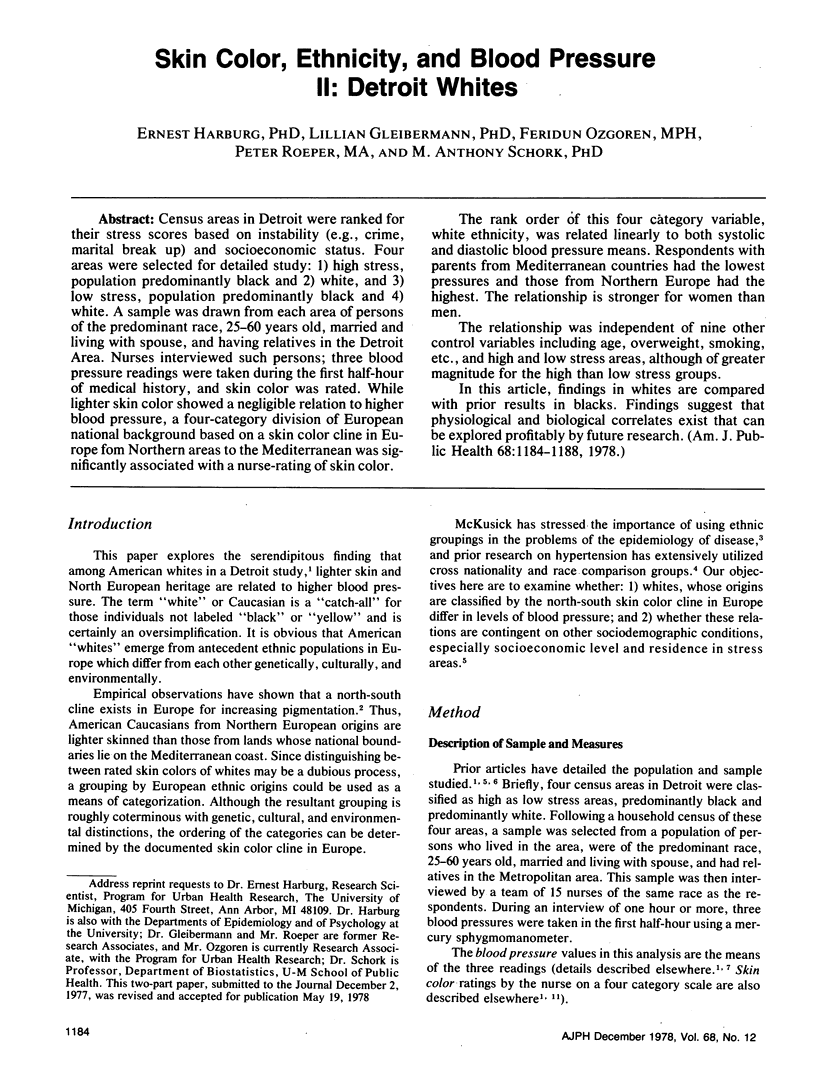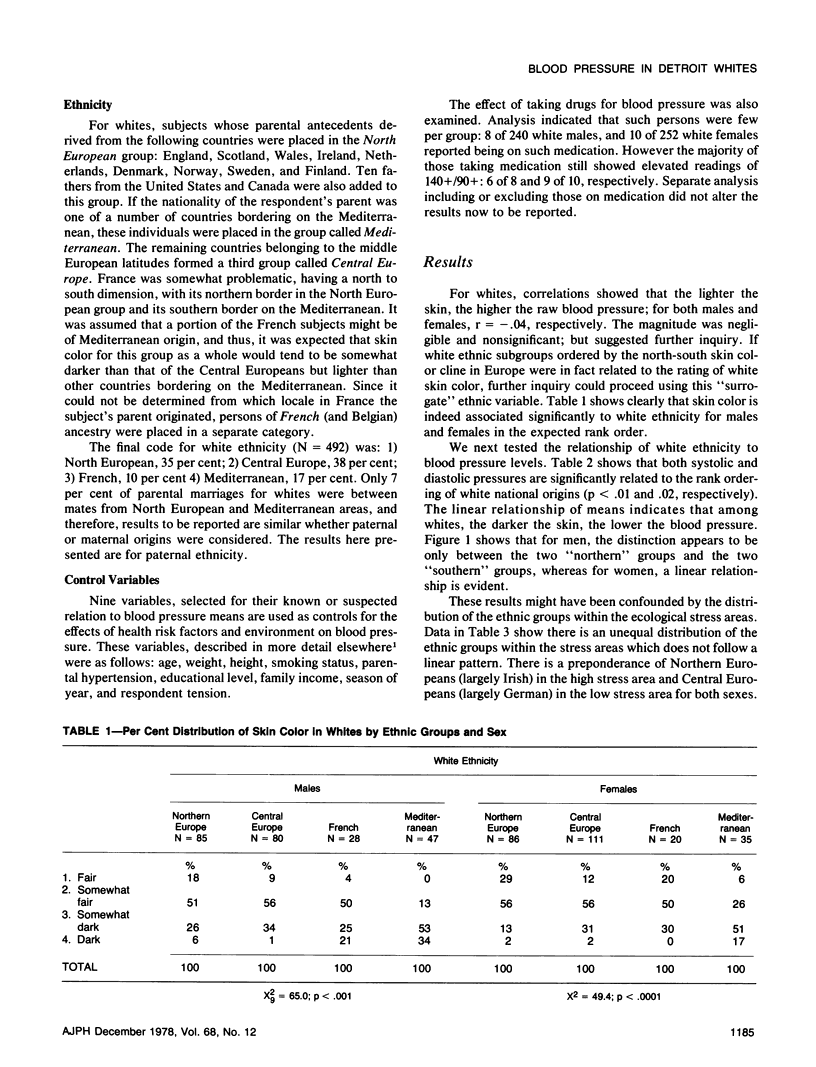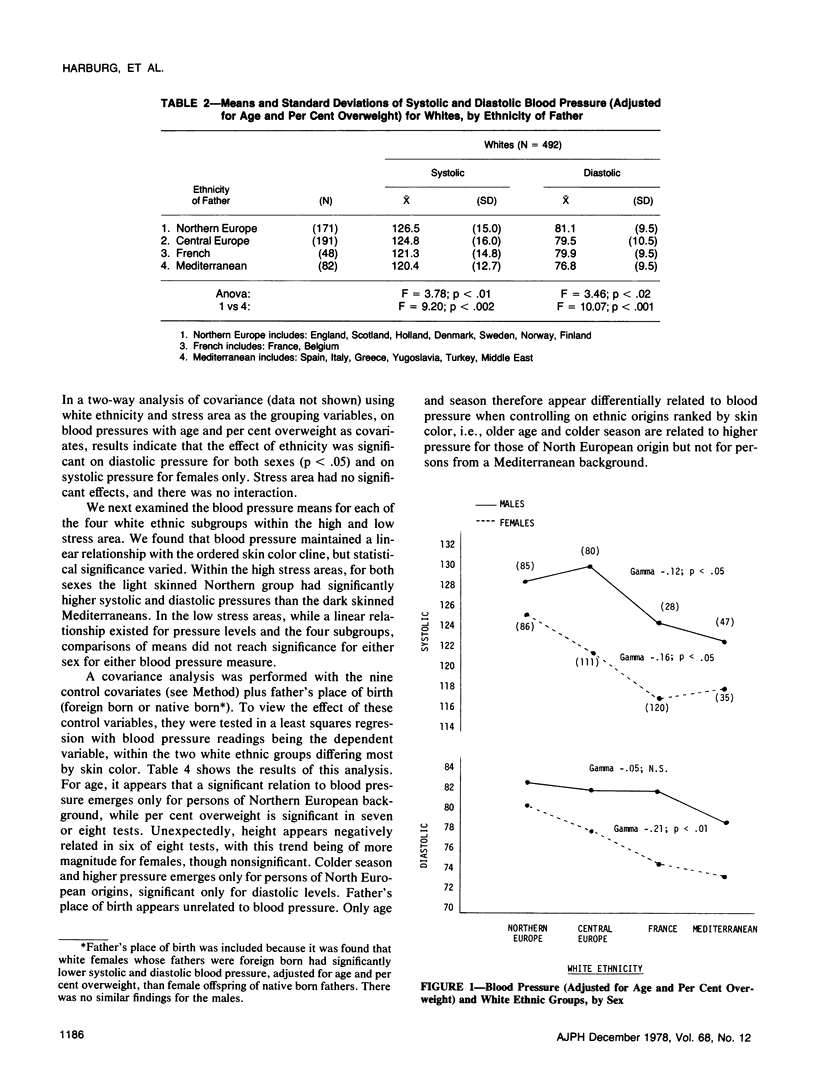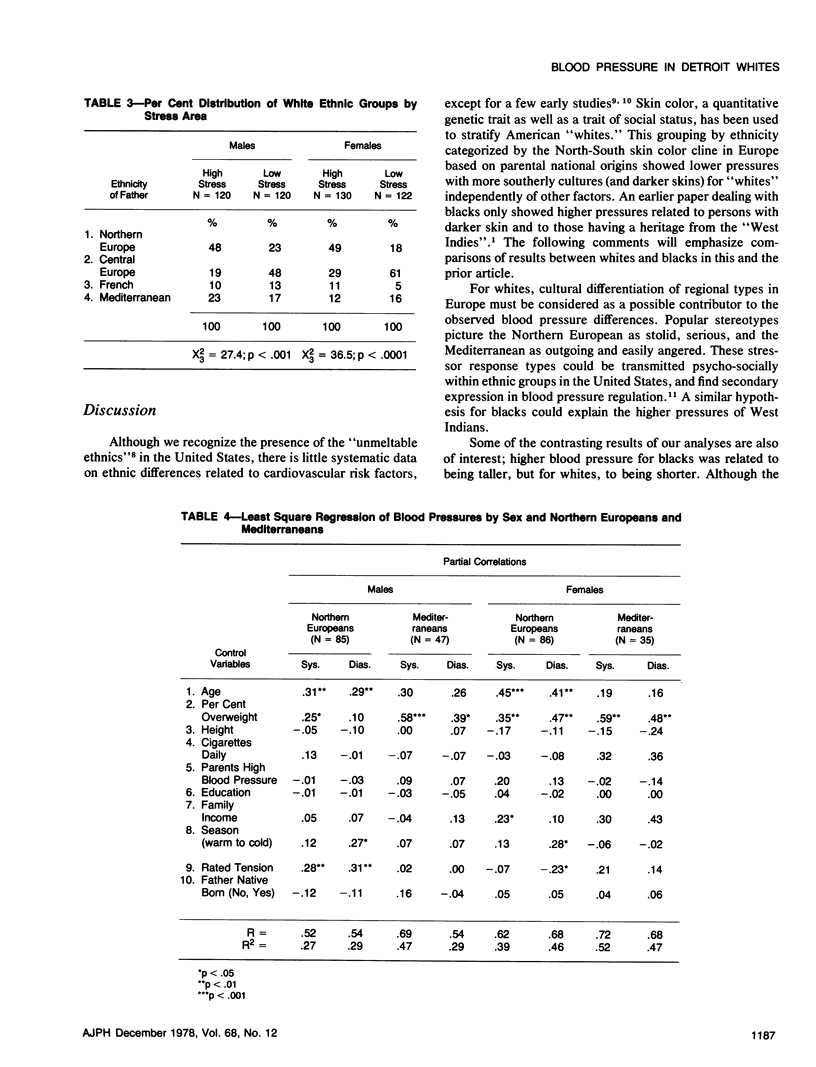Abstract
Census areas in Detroit were ranked for their stress scores based on instability (e.g., crime, marital break up) and socioeconomic status. Four areas were selected for detailed study: 1) high stress, population predominantly black and 2) white, and 3) low stress, population predominantly black and 4) white. A sample was drawn from each area of persons of the predominant race, 25-60 years old, married and living with spouse, and having relatives in the Detroit Area. Nurses interviewed such persons; three blood pressure readings were taken during the first half-hour of medical history, and skin color was rated. While lighter skin color showed a negligible relation to higher blood pressure, a four-category division of European national background based on a skin color cline in Europe from Northern areas to the Mediterranean was significantly associated with a nurse-rating of skin color. The rank order of this four category variable, white ethnicity, was related linearly to both systolic and diastolic blood pressure means. Respondents with parents from Mediterranean countries had the lowest pressures and those from Northern Europe had the highest. The relationship is stronger for women than men. The relationship was independent of nine other control variables including age, overweight, smoking etc., and high and low stress areas, although of greater magnitude for the high than low stress groups. In this article, findings in whites are compared with prior results in blacks. Findings suggest that physiological and biological correlates exist that can be explored profitably by future research.
Full text
PDF




Selected References
These references are in PubMed. This may not be the complete list of references from this article.
- Channick B. J., Adlin E. V., Marks A. D. Suppressed plasma renin activity in hypertension. Arch Intern Med. 1969 Feb;123(2):131–140. [PubMed] [Google Scholar]
- EPSTEIN F. H., BOAS E. P., SIMPSON R. The epidemiology of atherosclerosis among a random sample of clothing workers of different ethnic origins in New York City. I. Prevalence of atherosclerosis and some associated characteristics. J Chronic Dis. 1957 Mar;5(3):300–328. doi: 10.1016/0021-9681(57)90090-5. [DOI] [PubMed] [Google Scholar]
- Harburg E., Erfurt J. C., Chape C., Hauenstein L. S., Schull W. J., Schork M. A. Socioecological stressor areas and black-white blood pressure: Detroit. J Chronic Dis. 1973 Sep;26(9):595–611. doi: 10.1016/0021-9681(73)90064-7. [DOI] [PubMed] [Google Scholar]
- Harburg E., Erfurt J. C., Schull W. J., Schork M. A., Colman R. Heredity, stress and blood pressure, a family set method--I. Study aims and sample flow. J Chronic Dis. 1977 Oct;30(10):625–647. doi: 10.1016/0021-9681(77)90021-2. [DOI] [PubMed] [Google Scholar]
- Harburg E., Schork M. A., Erfurt J. C., Schull W. J., Chape C. Heredity, stress and blood pressure, a family set method--II. Results of blood pressure measurement. J Chronic Dis. 1977 Oct;30(10):649–658. doi: 10.1016/0021-9681(77)90022-4. [DOI] [PubMed] [Google Scholar]
- Helmer O. M. The renin-angiotensin system and its relation to hypertension. Prog Cardiovasc Dis. 1965 Sep;8(2):117–128. doi: 10.1016/s0033-0620(65)80003-2. [DOI] [PubMed] [Google Scholar]
- Kaplan N. M., Kem D. C., Holland O. B., Kramer N. J., Higgins J., Gomez-Sanchez C. The intravenous furosemide test: a simple way to evaluate renin responsiveness. Ann Intern Med. 1976 Jun;84(6):639–645. doi: 10.7326/0003-4819-84-6-639. [DOI] [PubMed] [Google Scholar]
- Korol B., Bergfeld G. R., McLaughlin L. J. Skin color and autonomic nervous system measures. Physiol Behav. 1975 May;14(5):575–578. doi: 10.1016/0031-9384(75)90184-5. [DOI] [PubMed] [Google Scholar]
- McKusick V. A. The ethnic distribution of disease in the United States. J Chronic Dis. 1967 Mar;20(3):115–118. doi: 10.1016/0021-9681(67)90045-8. [DOI] [PubMed] [Google Scholar]
- STAMLER J., LINDBERG H. A., BERKSON D. M., SHAFFER A., MILLER W., POINDEXTER A. Prevalence and incidence of coronary heart disease in strata of the labor force of a Chicago industrial corporation. J Chronic Dis. 1960 Apr;11:405–420. doi: 10.1016/0021-9681(60)90046-1. [DOI] [PubMed] [Google Scholar]
- Tyroler H. A. The Detroit project studies of blood pressure. A prologue and review of related studies and epidemiological issues. J Chronic Dis. 1977 Oct;30(10):613–624. doi: 10.1016/0021-9681(77)90020-0. [DOI] [PubMed] [Google Scholar]


